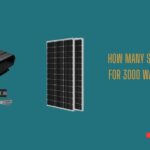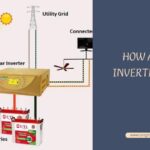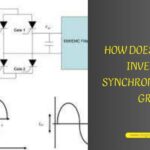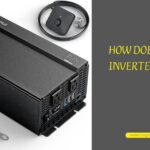How Long Does a Solar Inverter Last? (2024)
A solar inverter typically lasts for 10 to 15 years, depending on various factors such as usage and maintenance. Solar inverters are an essential component of a solar power system as they convert the direct current (DC) generated by solar panels into alternating current (AC), which can be used to power household appliances and feed excess electricity back to the grid.
With regular maintenance and proper care, solar inverters can provide reliable performance for a decade or more. However, it is important to consult with a professional installer or manufacturer for specific information about the lifespan and warranty of your particular solar inverter model.
Understanding The Lifespan Of Solar Inverters
When it comes to investing in solar power systems, one of the key components that homeowners and businesses need to consider is the solar inverter. The lifespan of a solar inverter plays a crucial role in determining the overall efficiency and longevity of the entire solar power system. Understanding how long a solar inverter can last and the factors that affect its lifespan is essential for making informed decisions regarding maintenance and replacements.
Factors Affecting The Lifespan Of Solar Inverters
The lifespan of a solar inverter can vary depending on several factors. By understanding these factors, homeowners and business owners can take the necessary precautions to ensure the longevity of their solar power systems. The following factors can significantly impact the lifespan of a solar inverter:
- Quality of components: The quality of the inverter components, such as capacitors and circuit boards, can greatly determine its lifespan. Opting for high-quality inverters from reputable manufacturers can help prolong their lives.
- Operating conditions: The operating conditions, including temperature, humidity, and exposure to sunlight, can have a significant impact on the longevity of the inverter. Extreme temperatures and harsh environments can reduce its lifespan.
- Overloading and underloading: Overloading the inverter by exceeding its capacity or underloading it by operating it continuously below its minimum rating can put unnecessary strain on the inverter, leading to a shortened lifespan.
- Installation quality: Proper installation is key to ensuring the longevity of a solar inverter. Poor installation practices, such as incorrect wiring, inadequate ventilation, or insufficient protection from environmental elements, can lead to premature failure.
The Role Of Maintenance In Prolonging The Lifespan
Maintenance plays a crucial role in prolonging the lifespan of a solar inverter. Regular inspections and servicing can help identify any potential issues early on and prevent them from causing significant damage. Here are some maintenance tasks that can help extend the life of the inverter:
- Regular cleaning: Keeping the inverter clean from dust, debris, and other contaminants can help prevent overheating and improve its overall efficiency.
- Tightening and securing connections: Checking and tightening electrical connections at regular intervals can prevent loose connections that can cause electrical faults or failures.
- Monitoring performance: Continuous monitoring of the inverter’s performance can help detect any irregularities or malfunctions promptly. Monitoring software can provide real-time data, enabling proactive maintenance and troubleshooting.
Common Signs That Indicate A Failing Inverter
Knowing the signs of a failing inverter is crucial to preventing further damage to the solar power system. Here are some common indications that your inverter may be failing:
- Lack of power generation: If your solar panels are not producing the expected amount of power, it could be a sign of inverter failure.
- Error messages: Error messages displayed on the inverter or monitoring system can indicate internal faults or malfunctions.
- Overheating: Burnt odors or other telltale signs of overheating, such as the inverter emitting excessive heat, can indicate a failing inverter.
The importance Monitoring monitoring and regular inspections
Regular monitoring and inspections are vital to ensuring the optimal performance and longevity of a solar inverter. By implementing a proactive approach, homeowners and businesses can identify potential issues early on and take the necessary steps to address them. Regular inspections can help detect any signs of wear and tear, loose connections, or performance irregularities, allowing for timely repairs or replacements. Additionally, monitoring the inverter’s performance can provide valuable data on energy production, helping homeowners and businesses track system efficiency and make informed decisions regarding maintenance and upgrades.
Average Lifespan Of Solar Inverters
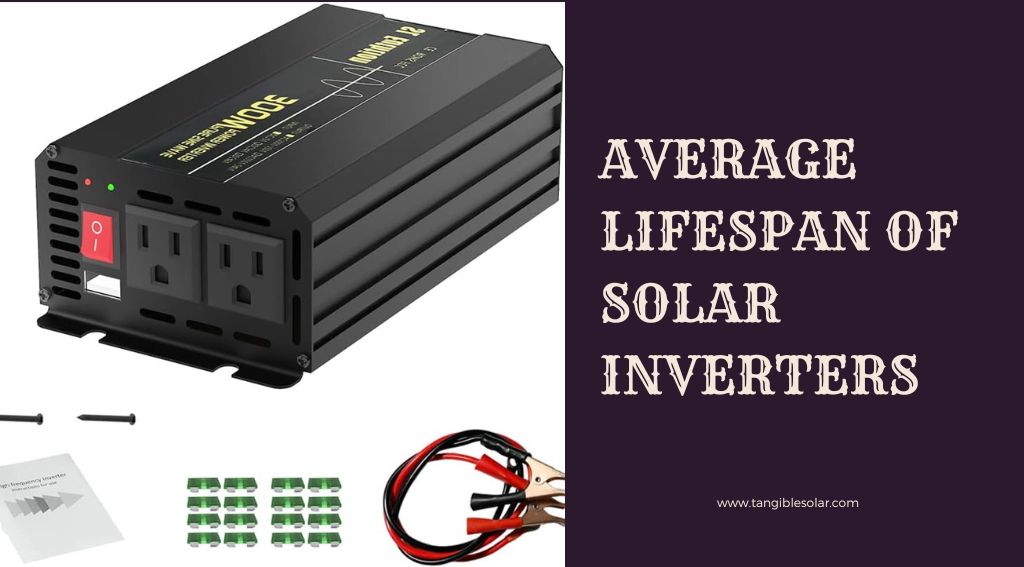
When it comes to investing in solar power systems, it’s important to understand the average lifespan of solar inverters. The solar inverter plays a crucial role in converting the direct current (DC) generated by solar panels into usable alternating current (AC) for your home or business. Knowing how long a solar inverter typically lasts will help you plan for its eventual replacement and ensure the continued efficiency of your solar energy system.
How Does a Solar Inverter Synchronize With Grid
Industry Standards For Inverter Lifespan
Industry standards dictate that the average lifespan of a solar inverter ranges between 10 and 20 years. This estimate is based on the components’ expected durability, considering factors such as the quality of materials used and the manufacturing processes involved. Manufacturers often provide warranties ranging from 5 to 10 years, giving you peace of mind during the initial years of operation. However, it’s essential to note that while an inverter may function beyond its estimated lifespan, its efficiency can decline over time, affecting the overall performance of your solar energy system.
Real-world Cases And Examples Of Inverter Longevity
In real-world scenarios, the lifespan of solar inverters can vary depending on various factors. Some inverters have been known to last well beyond the industry standard, reaching 25 years or more with proper maintenance and favorable operating conditions. However, specific cases may also arise where an inverter fails earlier than expected, highlighting the importance of regular maintenance and monitoring.
For instance, a solar inverter installed in an area with harsh environmental conditions, such as extreme temperatures or high humidity, may experience accelerated deterioration. In contrast, inverters deployed in moderate climates and subjected to routine inspections and cleaning have been shown to have an extended lifespan. It’s crucial to consider these real-world cases and examples when assessing the longevity of a solar inverter.
Variations In Lifespan Based On Inverter Type And Quality
The lifespan of a solar inverter can also vary based on the type of inverter and its quality. Different types of inverters, such as string and microinverters, may have differing lifespans due to variations in design and components. String inverters, which are commonly used in larger solar installations, have been known to have longer average lifespans compared to microinverters.
The quality of an inverter also plays a significant role in its longevity. Higher-quality inverters, often manufactured by reputable brands, tend to have more robust components and better build quality. These inverters may come with a slightly higher price tag but can provide increased durability and extended lifespans, making them a worthwhile investment in the long run.
Factors That Can Significantly Shorten The Lifespan
While solar inverters have a relatively long average lifespan, certain factors can significantly shorten their overall durability. These factors include:
- Poor installation practices
- Improper maintenance and neglect
- Excessive heat or cold exposure
- High humidity or corrosive environments
- Power surges or electrical issues
To maximize the lifespan of your solar inverter, it’s essential to choose qualified professionals for installation, follow recommended maintenance practices, and protect the inverter from extreme environmental conditions. Regular monitoring and prompt troubleshooting of any electrical issues can also help identify potential problems early on, allowing for timely repairs or replacements.
Extending The Lifespan Of Solar Inverters
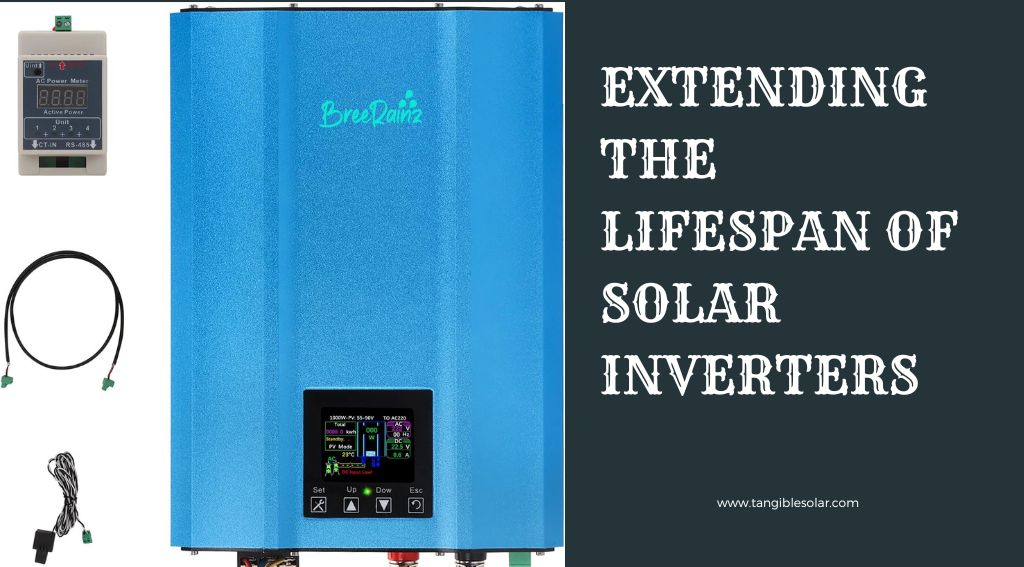
The lifespan of a solar inverter can vary depending on various factors, including the quality of the inverter, the environment it is installed in, and how it is maintained. To ensure your solar inverter continues to perform optimally and lasts for as long as possible, it’s important to follow best practices for installation, select the right inverter, perform regular maintenance, and consider upgrading when necessary.
Best Practices For Proper Installation And Wiring
Proper installation and wiring are crucial for the longevity of a solar inverter. Incorrect installation or poor wiring can lead to inefficient operation and increase the risk of damage. To ensure a successful installation, follow these best practices:
- Ensure proper grounding and bonding of the inverter according to local electrical codes.
- Use appropriate wire sizes and connections to minimize voltage drop and potential overheating.
- Protect the inverter from extreme temperatures, humidity, and direct sunlight.
- Ensure adequate ventilation for proper heat dissipation.
- Follow the manufacturer’s guidelines for string sizing and configuring multiple inverters.
Importance Of Selecting The Right Inverter For The System
Selecting the right inverter for your solar system is essential for maximizing its lifespan. Factors to consider when choosing an inverter include:
- The overall capacity and size of your solar system.
- The type of solar panels and their specifications.
- The efficiency and reliability of the inverter.
- The compatibility of the inverter with other system components.
- The warranty and customer support are provided by the manufacturer.
Regular Maintenance And Cleaning Tips
Regular maintenance and cleaning can significantly extend the lifespan of a solar inverter. Here are some tips to keep in mind:
- Regularly inspect the inverter for any signs of damage or wear.
- Clean the inverter’s exterior using a soft cloth and mild detergent.
- Keep the surrounding area clean and free from dust or debris that could obstruct ventilation.
- Check and tighten all connections to ensure they are secure.
- Monitor the inverter’s performance and refer to the manufacturer’s guidelines for troubleshooting and maintenance.
Upgrading Vs. Replacing: Maximizing Lifespan Through Technology Advancements
As technology advances, newer models of solar inverters offer improved efficiency and performance. While solar inverters generally have a lifespan of 10 to 20 years, upgrading to a newer model can provide additional benefits such as increased energy yield and enhanced grid interaction capabilities. It’s important to evaluate the cost-effectiveness of upgrading versus replacing your solar inverter based on factors like energy savings, available incentives, and the overall condition of your solar system.
Importance Of Inverter Lifespan In Solar Power Systems
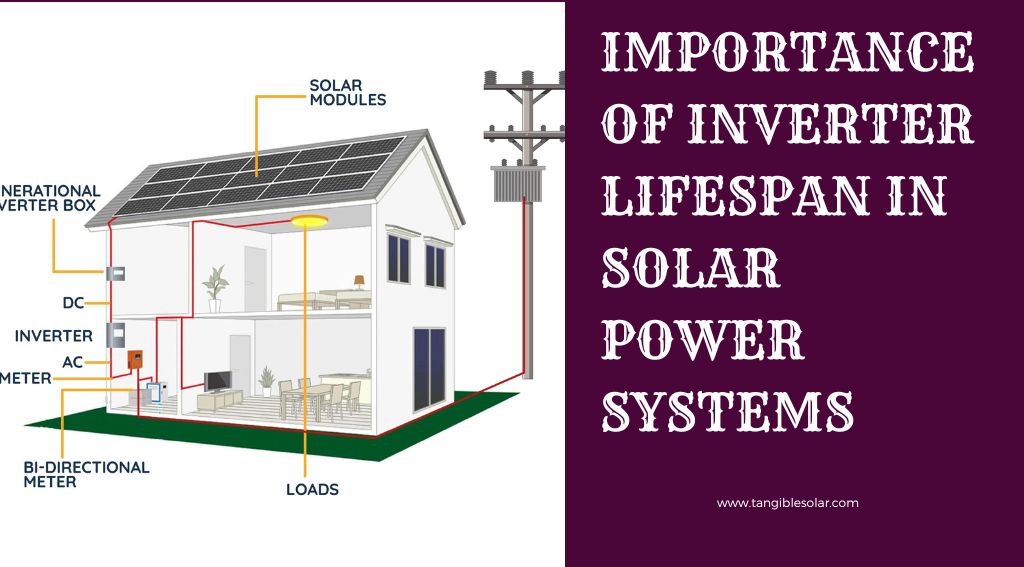
The lifespan of a solar inverter plays a vital role in the performance and overall efficiency of a solar power system. As one of the key components of the system, the inverter converts the DC electricity generated by the solar panels into usable AC power for your home or business. However, just like any electronic device, inverters have a limited lifespan and will eventually require replacement. Hence, understanding the importance of inverter lifespan is crucial to ensure the long-term success and financial viability of your solar power system.
Effects Of Inverter Failure On Solar System Performance
When an inverter fails, the entire solar power system can experience significant performance issues. A failed inverter can result in a system-wide shutdown, rendering your solar panels useless. This means that during the downtime, your solar power system will not be generating electricity and you will have to rely solely on grid power, which can lead to higher electricity bills. Moreover, the overall energy production of the system will be significantly reduced, resulting in lower financial savings and environmental benefits. Therefore, it is crucial to ensure the lifespan of your inverter to avoid any potential system failures.
Financial Implications Of Replacing A Failed Inverter
Replacing a failed inverter can lead to unexpected financial implications. In addition to the cost of the new inverter itself, you may also incur additional expenses for professional installation and any necessary upgrades to the existing system. Furthermore, the downtime required for the replacement can result in financial losses due to the temporary halt in energy production. It is important to keep in mind these potential costs when considering the overall return on investment (ROI) of your solar power system and to factor in the lifespan of your inverter to avoid unexpected expenses.
How Inverter Lifespan Affects ROI and Overall System Efficiency
The lifespan of your inverter directly impacts the ROI and overall efficiency of your solar power system. A longer inverter lifespan means fewer replacements and associated costs, resulting in higher financial returns over the system’s lifetime. Additionally, a well-maintained inverter with an extended lifespan ensures optimal system performance, maximizing the energy output and efficiency of your solar panels. This translates into greater financial savings and environmental benefits. Therefore, considering the lifespan of your inverter is crucial for achieving a favorable ROI and ensuring the long-term operational success of your solar power system.
Choosing The Right Solar Inverter For Longevity
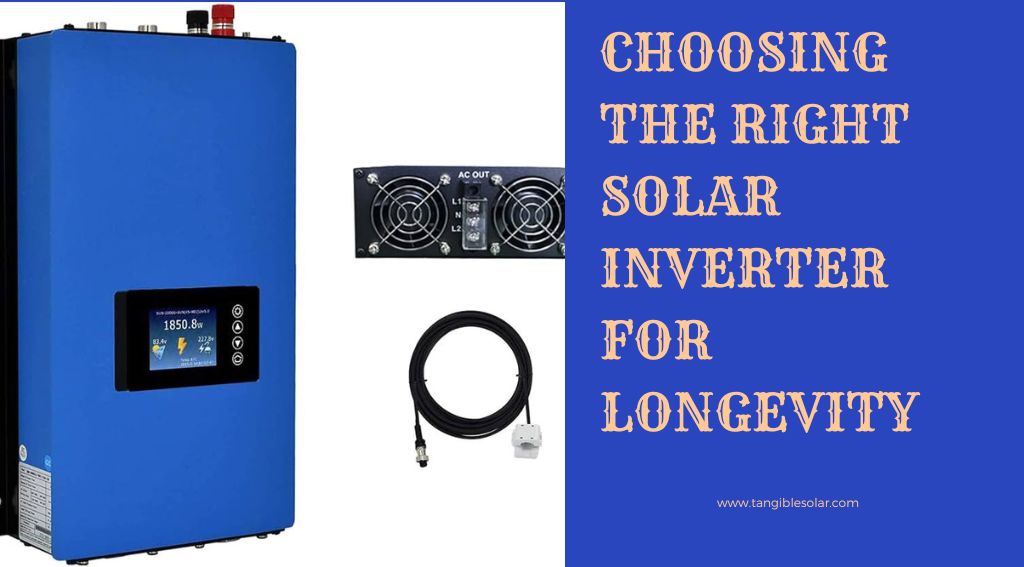
Exploring renewable energy options for your home? Switching to solar power is a smart choice that not only helps the environment but also offers long-term financial benefits. When it comes to investing in solar panels, one vital component that plays a crucial role in the system’s performance and lifespan is the solar inverter. The solar inverter converts the DC power generated by the solar panels into AC power that can be used to power your home, store excess energy in batteries, or feed back into the grid.
How to Connect Solar Panel Inverter And Battery
Factors To Consider When Selecting An Inverter
Choosing the right solar inverter is essential to maximize the efficiency and longevity of your solar power system. Here are some important factors to consider:
- Load capacity: Consider the expected load capacity to ensure the inverter can handle the power demand of your household appliances.
- Inverter type: Evaluate the different types of inverters available, such as string inverters, microinverters, and power optimizers, to determine which one suits your specific needs.
- Compatibility: Ensure compatibility between the inverter and your solar panels, batteries, and monitoring systems for seamless integration.
- Efficiency: Look for inverters with high-efficiency ratings to maximize the power conversion process and reduce energy losses.
- Monitoring capabilities: Opt for inverters that offer advanced monitoring capabilities, allowing you to keep track of your system’s performance and detect any issues promptly.
Warranty And Product Support Considerations
Investing in a solar inverter with a solid warranty and reliable product support is vital for long-term peace of mind. When evaluating different inverters, pay attention to the following warranty and product support aspects:
- Manufacturer warranty: Check the length of the inverter’s manufacturer warranty, as well as any options for extended warranties.
- Product support: Research the manufacturer’s reputation for customer support, including their responsiveness and availability of technical assistance.
- Authorized service centers: Find out if there are authorized service centers near you that can provide timely repairs or replacements in case of any issues.
Benefits Of Investing In Higher Quality Inverters
While higher-quality inverters may come with a higher price tag, the benefits of investing in them outweigh the initial cost. Here are some advantages of choosing higher-quality inverters:
- Reliability: Higher quality inverters are built with more durable components, which contribute to their longer lifespan and enhanced reliability.
- Improved performance: These inverters often come with advanced features and better efficiency, leading to improved system performance and energy production.
- Enhanced safety: Higher quality inverters undergo rigorous testing to ensure compliance with safety standards, reducing the risk of electrical issues or malfunctions.
- Longer warranties: Premium inverters usually offer longer warranty periods, providing added protection and peace of mind over the lifespan of your solar power system.
Evaluating The Lifecycle Cost Of The Inverter
When deciding on a solar inverter, considering the lifecycle cost is crucial. The initial purchase price should not be the sole determinant. Instead, evaluate various factors such as the inverter’s longevity, efficiency, warranty coverage, and maintenance costs over time. By looking at the bigger picture, you can make an informed decision that will save you money in the long run.
Frequently Asked Questions Of How Long Does A Solar Inverter Last
When Should I Replace My Solar Inverter?
Replace your solar inverter when it shows signs of malfunctioning or reaches its expected lifespan, typically around 10-1 5 years. Look for red flags like frequent system shutdowns, reduced energy production, and error messages. Regular maintenance and monitoring can also help identify when replacement is necessary, maximizing efficiency and performance.
How Do I Know If My Solar Inverter Is Bad?
To determine if your solar inverter is bad, look for signs such as no power output, frequent tripping or error messages on the display, unusual noises or smells, or a lack of communication with the monitoring system. If you notice any of these issues, it’s best to consult a professional for inspection and repairs.
Do Solar Panel Inverters Wear Out?
Solar panel inverters do wear out over time. The lifespan of an inverter typically ranges from 10 to 20 years, depending on the quality and usage. Regular maintenance and monitoring are necessary to ensure optimal performance and detect any potential issues.
Why Does A Solar Inverter Fail?
A solar inverter can fail due to various reasons, such as overload, excessive heat, electrical surges, or component failure. It is essential to maintain and monitor the inverter regularly to prevent or detect any potential issues and ensure its proper functioning.
Conclusion
The lifespan of a solar inverter depends on various factors, including the quality of the product, maintenance, and environmental conditions. On average, a solar inverter can last between 10 and 15 years. However, by regularly conducting proper inspections and maintenance, you can extend the life of your inverter.
Investing in a high-quality inverter from a reputable manufacturer is essential for long-term performance and durability. So, ensure that you choose wisely when purchasing a solar inverter to maximize its longevity and efficiency. [Word count: 84 words]

